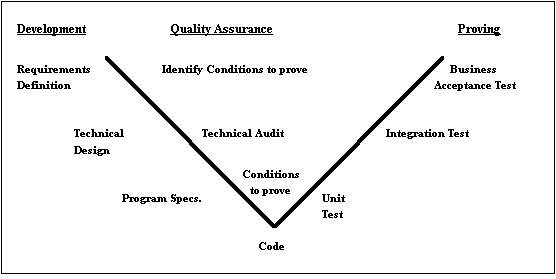Sample Test Plan
Chapter 1 - Introduction
1. INTRODUCTION
1.1. Overview of System X
1.2. Purpose of this Document
1.3. Formal Reviewing
1.4. Objectives of System Test
1. INTRODUCTION
To aim of this phase of the project is to
implement a new X System platform that will enable:
- Removal of legacy office systems
- Introduction of ABC
- Processing of Special Transactions
- No constraint on location of capture
- Enable capture of transactions for other
processing systems
- New Reconciliation Process
- Positioning for European ECU Currency and
future initiatives
This programme will result in significant
changes to the current departmental and inter-office processes. The
functionality will be delivered on a phased basis.
Phase 1 will incorporate the following facilities
:
- Replacement of the legacy System A
- New Reconciliation System
- Outsourcing system for departments in
different european countries.
- New/Revised Audit Trail & Query
Facilities
[Detailed inclusions are listed later in this
document]
This document is to serve as the Draft
Test Approach for the Business Systems Development Project.
Preparation for this test consists of three major
stages:-
- The Test Approach sets the scope of
system testing, the overall strategy to be adopted, the activities to be
completed, the general resources required and the methods and processes to be
used to test the release. It also details the activities, dependencies and
effort required to conduct the System Test.
- Test Planning details the activities,
dependencies and effort required to conduct the System Test.
- Test Conditions/Cases documents the tests
to be applied, the data to be processed, the automated testing coverage and
the expected results.
1.3. Formal
Reviewing
There will be several formal review points before
and during system test. This is a vital element in achieving a quality product.
1.3.1. Formal Review Points
1. Design Documentation
2. Testing
Approach
3. Unit Test Plans
4. Unit Test Conditions & Results
5.
System Test Conditions
6. System Test Progress
7. Post System Test
Review
At a high level, this System Test intends to prove
that :-
- The functionality, delivered by the development
team, is as specified by the business in the Business Design Specification
Document and the Requirements Documentation.
- The software is of high quality; the software
will replace/support the intended business functions and achieves the
standards required by the company for the development of new systems.
- The software delivered interfaces correctly with
existing systems, including Windows 98.
[Detailed objectives are listed later in this
document.]

The above V Model shows the optimum testing
process, where test preparation commences as soon as the Requirements Catalogue
is produced. System Test planning commenced at an early stage, and for this
reason, the System test will benefit from Quality initiatives throughout the
project lifecycle.
The responsibility for testing between the Project
& Software Qualtiy Assurance (S.Q.A.) is as follows:
- Unit Test is the responsibility of the
Development Team
- System Testing is the responsibility of
SQA
- User Acceptance Testing is the Responsibility of
the User Representatives Team
- Technology Compliance Testing is the
responsibility of the Systems Installation & Support Group.
|